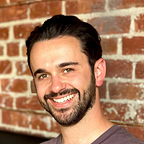Here’s one community information project the broadcast spectrum auction could support
This week, Mike Rispoli and Craig Aaron of Free Press announced the launch of a new campaign that could raise massive amounts of money to support quality, hyperlocal journalism in communities across the country.
The campaign represents what Rispoli and Aaron call a “once-in-a-lifetime opportunity” to invest millions of dollars from the FCC’s public broadcasting spectrum auction, which will free up more bandwidth for mobile data by selling off a portion of the airwaves. The auction could generate large sums of money for state and local governments, universities, and other license owners — up to $50 billion.
“Instead of simply putting the auction revenues into state treasuries or university endowments,” Rispoli and Aaron write, “the funds could be used to establish long-term support for responsive local journalism, community media, civic technology and other projects that serve the public’s information needs.”
If the campaign is successful, they write, the money could be used “to reimagine public media in ways that help communities, amplify previously overlooked voices and tell important stories.”
In an interview with Motherboard’s Ben Sullivan, Rispoli called for investment in “local journalism and community information projects.”
We could not agree more.
In fact, Joe Amditis and I are already in the process of creating a policy framework that would allow us to serve those community information needs directly through the use of special service districts, also known as special districts or SSDs.
Special service districts are independent, special-purpose units that operate separately from the local government and exist for the sole purpose of performing a specific function. Communities come together to form SSDs whenever there is a need for a particular public service. Individuals within a given geographic area pay a small fee to support that service. There are currently more than 30,000 SSDs in the United States, but none of them are used to meet the public information needs of local communities. We see no reason why they shouldn’t be used for just that purpose.
As such, we are proposing a new type of special district, which we’re calling a “Community Information District,” or CiD. These CiDs would help fill the information gaps and needs in local communities that are quickly becoming — and in many cases already are — vast media deserts.
In 2017, we will present a policy roadmap to pursue the establishment of pilot CiDs. If successful, this model could be a monumental step forward in the way we think about and fund local journalism. Because it provides a sustainable stream of operating revenue for local publications, a CiD would enable journalists to prioritize serving the information needs of communities instead of clicks and pageviews — just like the vision offered by Rispoli and Aaron at Free Press.
If Free Press’ campaign to secure funding for “local journalism and community information projects” is successful, we believe it would be a perfect opportunity to support the establishment of the first CiD. A relatively small investment from the fund could spark an accountable, sustainable, and effective local journalism organization for years. Think of it as a seed grant.
In 2009, the Knight Foundation published the Knight Commission Report on Informing Communities and declared that “Information is as vital to the healthy functioning of communities as clean air, safe streets, good schools and public health.” The report also reminds us that “America needs ‘informed communities,’ places where the information ecology meets people’s personal and civic information needs.”
We agree, and we are glad to be a part of any effort to revive the notion of news and information as a foundation of our democracy.
Clearly, the conversation on how we can publicly finance the delivery of vital local information is well underway. The announcement by Free Press shows that it’s gaining even more traction.
In an op-ed for the New York Times, Geraldine R. Dodge Foundation president Christopher Daggett wrote, “We have a rare chance to strengthen communities by breathing new energy into local news and information. Members of the public no doubt could come up with many other superb ideas. So why not ask them?”
Well, here’s our idea. We look forward to hearing your thoughts.
